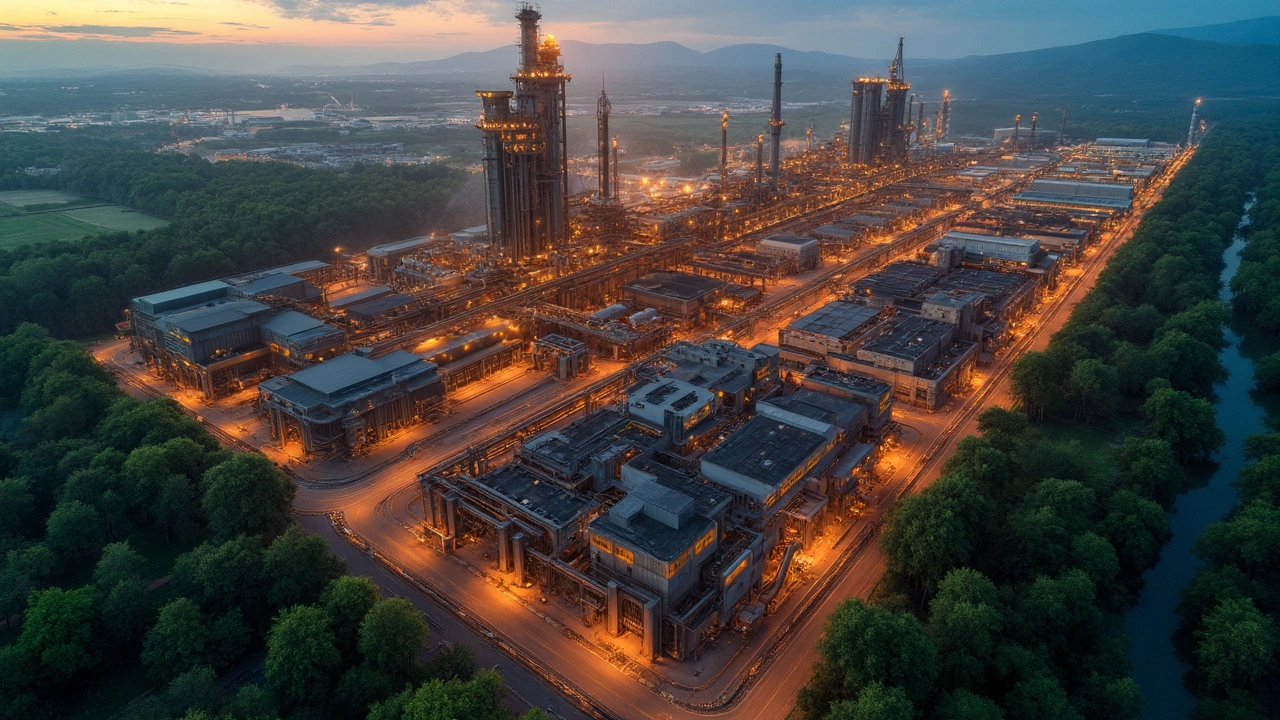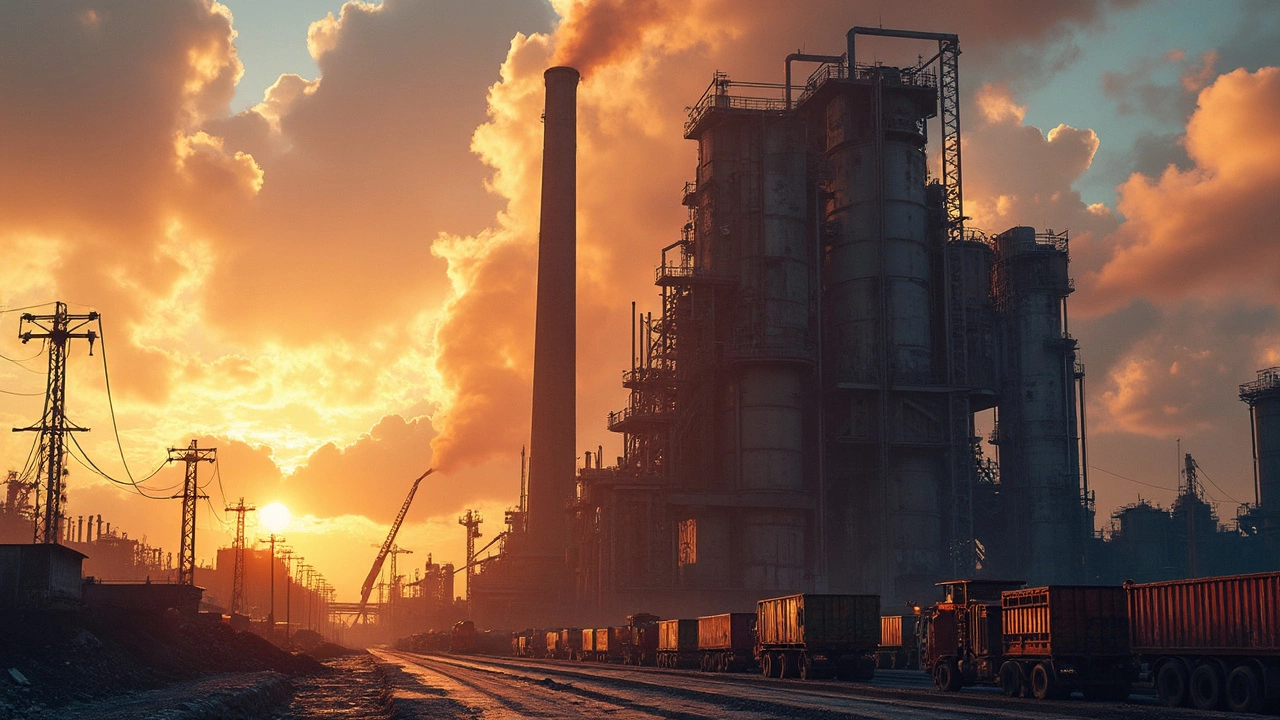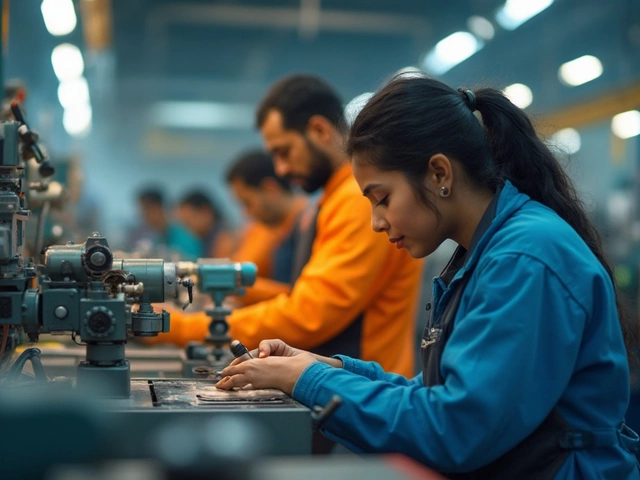You might be wondering, what's the biggest steel mill in the United States? Well, that would be the U.S. Steel Gary Works in Indiana. This place isn't just big; it's massive and historic. Established way back in 1906, it's been a backbone of American steel production for over a century.
Located on the southern shore of Lake Michigan, Gary Works has a mega production capacity. It can churn out millions of tons of steel every year. How does it do that? With cutting-edge technology and a relentless force of workers who keep things rolling day and night. It's so efficient that it's like the heartbeat of America's steel industry.
Why does it matter? Apart from the sheer scale, the mill plays a crucial role in the economy. It provides lots of jobs, directly and indirectly. Think about the car you drive or the buildings you walk past; steel from this giant probably had a part in it.
Yet, it's not without challenges. The steel industry faces tough questions about sustainability today. Gary Works is navigating these waters, too, with efforts to reduce emissions and conserve resources. It's a balancing act, but one that's crucial for a better future.
- Overview of the Biggest Steel Mill
- Production Capacity and Technology
- Economic Impact and Workforce
- Environmental and Future Challenges
Overview of the Biggest Steel Mill
The biggest steel mill in the United States, U.S. Steel Gary Works, is more than just a production plant. Nestled strategically in Gary, Indiana, this mill has been operational since 1906, standing as a testament to the evolution of the US steel manufacturing industry.
Originally built to capitalize on the proximity to Chicago and the Great Lakes, Gary Works covers approximately 4,000 acres. That's a lot of ground, right? It's practically a city dedicated to steel production. The mill began with a vision of massive output powered by modern techniques, which today means advanced automation and precision engineering.
Historical Significance
Gary Works wasn’t just about steel; it laid the foundation for the city itself. U.S. Steel carefully planned and built the city of Gary simultaneously to house its workforce, embedding the town's identity with the mill's fortunes. As the steel industry grew, so did Gary, becoming a hub of innovation and economic activity.
Production Capabilities
The production capacity of Gary Works is immense. Capable of producing around 7.5 million tons of steel annually, it's a key player in supplying material for automotive manufacturing, appliances, and construction. The mill's capabilities keep expanding thanks to investments in technology to meet modern demands and standards.
Technological Edge
The use of technology at Gary Works is something to note. Whether it's the massive blast furnaces or the continuous casting processes, everything's designed to maximize efficiency and output. The integration of technology makes it one of the most advanced steel mills globally.
Current Operations
Even today, Gary Works operates on the cutting edge of the steel production realm. The mill continuously works to improve its environmental impact, investing in methods to reduce carbon footprints and enhance recycling operations.
By balancing traditional practices with modern technology and sustainable methods, Gary Works remains a cornerstone of the American steel industry. It's a vivid illustration of what large-scale steel manufacturing can achieve when history and innovation go hand in hand.
Production Capacity and Technology
When it comes to sheer production capacity, the Gary Works is an absolute giant. This steel mill produces millions of tons of steel annually. To give you an idea, it can pump out over 7.5 million tons every year, making it one of the most prolific steel producers in the country.
How do they manage it? Well, it comes down to leveraging some seriously advanced technology. The Gary Works uses a combination of basic oxygen furnaces and continuous casting processes. This means turning raw iron into liquid steel and then casting it into semi-finished parts all in a streamlined, efficient cycle.
Key Technologies in Use
- Basic Oxygen Furnace (BOF): This crucial technology allows the conversion of iron into steel by blowing oxygen through molten iron to reduce the carbon content.
- Continuous Casting: Instead of the old-school method of pouring molten metal into molds, this method casts steel directly into slabs, blooms, or billets, saving time and energy.
- Hot Strip Mill: It rolls the slabs into coils or sheets, which are crucial for manufacturing and building industries.
The Role of Automation
Automation plays a big part here too. Robots handle repetitive tasks, ensuring safety and precision. These advanced machines continuously monitor quality, making sure the steel meets all industry standards.
The optimization of these processes not only boosts the production numbers but also helps to lower costs, which is vital for maintaining a competitive edge in the steel industry.
While the numbers are impressive, challenges remain like balancing production with sustainability goals. There's constant innovation happening to make the processes more eco-friendly, and the Gary Works mill is at the forefront of adopting greener technologies.

Economic Impact and Workforce
The Gary Works mill isn't just a monster in terms of production; it's also a big player economically. It's the lifeblood of the local economy, employing thousands of people in the region. These jobs aren't just important; they're crucial, offering stability and decent pay that supports families for generations.
Local and National Importance
On a local level, Gary Works is essentially the beating heart of Gary, Indiana. It drives not only direct employment but also creates a ripple effect. There are numerous small businesses—from restaurants to supply shops—thriving because of the mill's presence. Nationally, it holds significant weight. By producing a large chunk of the steel used in the U.S., it ensures that industries like automotive, construction, and manufacturing keep humming along.
| Impact Area | Estimated Jobs |
|---|---|
| Direct Mill Employment | 10,000 |
| Supportive Industries | 25,000 |
Training and Development
But it doesn’t stop at providing jobs; Gary Works invests in its workforce. There are training programs that range from technical skills to management training. It's about building careers, not just jobs. That's a critical factor because as technology evolves, so does the need for skills that adapt to new challenges.
Economic Challenges and Opportunities
Still, the mill faces economic challenges like any large industrial facility. Price fluctuations in raw materials and steel prices can make life tricky. But, the focus on innovation and efficiency helps keep it competitive. Plus, with more industries turning to sustainable practices, there's a growing market for green steel—an avenue for potential growth.
In summary, the economic impact and job opportunities from the biggest steel mill in the U.S. are a big deal, not just for Indiana, but for the entire country. It shows how manufacturing hubs contribute deeply to local and national economies while evolving to fit the future's needs.
Environmental and Future Challenges
Like many industrial giants, U.S. Steel Gary Works faces its share of environmental challenges. The focus on reducing emissions has never been greater. With climate change on everyone’s mind, steel mills must find ways to cut down their carbon footprints. This involves shifting to cleaner technologies and energy sources. It's no small feat but it's crucial for the future.
Reducing Emissions
Gary Works is taking serious steps toward reducing greenhouse gas emissions. The facility invests in advanced technologies that capture and reuse gases that would otherwise be released into the atmosphere. They're exploring options like electric arc furnaces, which are less carbon-intensive.
Resource Conservation
Another biggie is resource conservation. Making steel requires a lot of water and energy. Gary Works is implementing measures to recycle water and reduce usage. Efficient energy consumption is on their radar, too, driving them to adopt energy-saving technologies.
Sustainability Programs
The mill participates in various sustainability programs that align with global environmental standards. They actively engage with regulatory bodies and environmental groups to ensure compliance and foster innovation. It’s a win-win where reducing waste also cuts costs.
Yet, the road ahead is not without obstacles. Economic competition and new regulations add layers of complexity. However, U.S. Steel Gary Works seems committed to adapting and leading the way in the US steel manufacturing industry by tackling these environmental challenges head-on.






